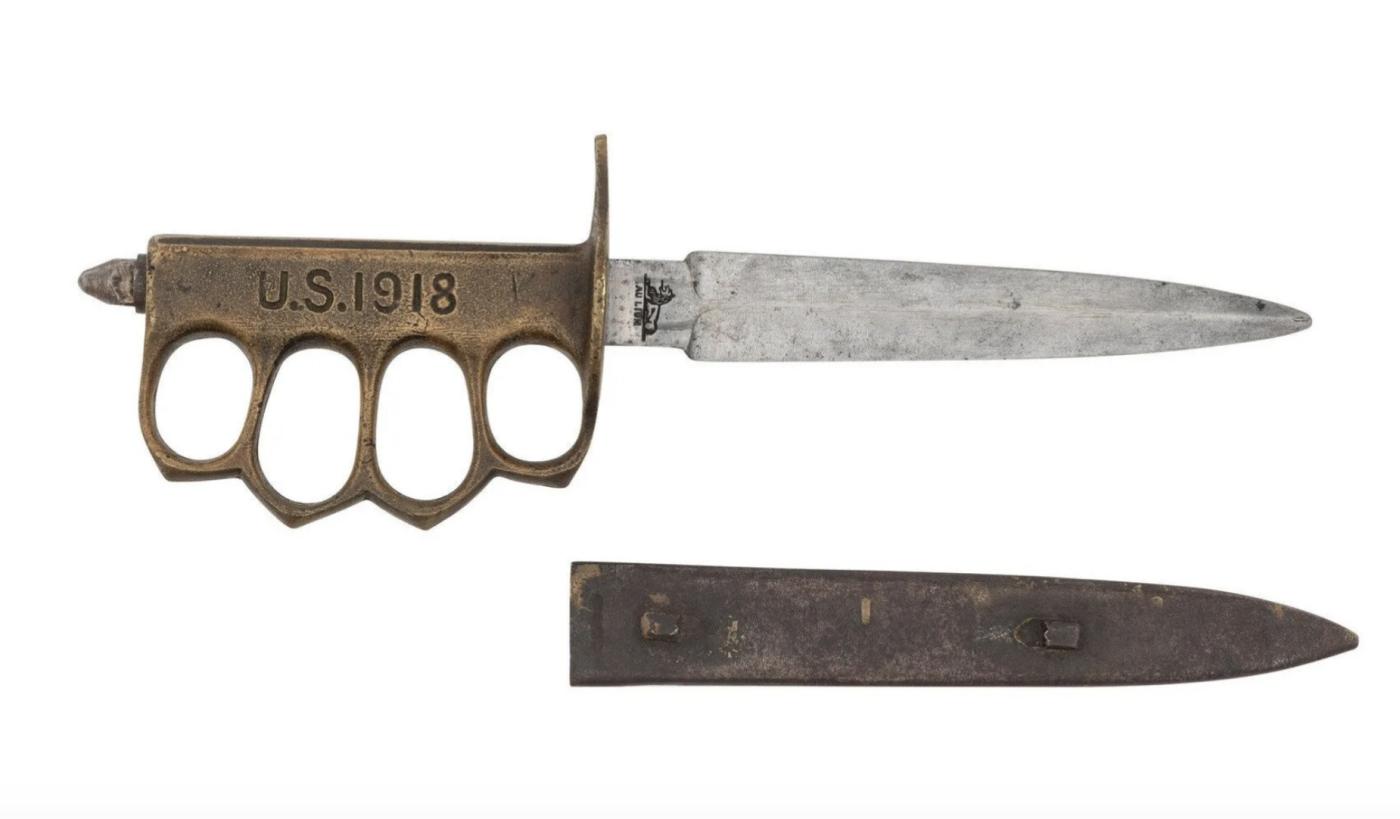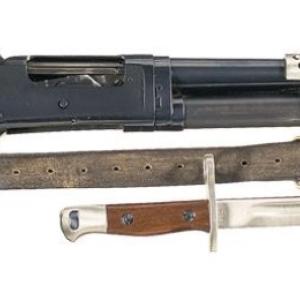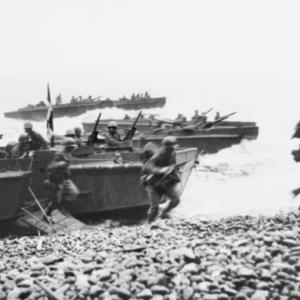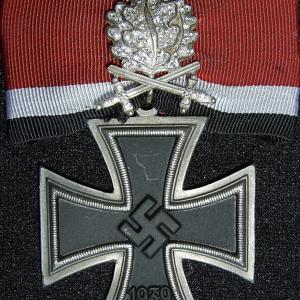
WW1 MS918 Trench Knife
The World War I Model 1918 Knuckle Duster Trench Knife, commonly known as the M1918, was a specialized combat weapon designed for brutal close-quarters fighting in the trenches. It was developed by the U.S. Army’s Ordnance Department as the need for effective hand-to-hand weapons grew during the brutal stalemate of trench warfare. The design combined a sharp stabbing blade with a brass knuckle-style handle, enabling soldiers not only to thrust with deadly precision but also to deliver powerful punches in close combat.
The knife’s design was heavily influenced by earlier French trench knives, particularly the French “Poignard-Baïonnette Lebel,” but adapted to meet American military requirements. The distinctive knuckle duster handle was intended to maximize damage during punches, and the triangular blade was designed primarily for stabbing through thick clothing, equipment, and flesh. The knife was produced in the United States, with several manufacturers contracted to meet demand, including the Utica Cutlery Company and the National Arms Company. However, one of the most notable makers was the French firm Au Lion, which produced many of the knives under American contract, evidenced by their markings on surviving examples.
Production of the M1918 was relatively limited. Estimates suggest that approximately 5,000 to 7,000 knives were made during the brief period of American involvement in the war from 1917 to 1918. This relatively low number was due in part to the evolving nature of combat and the subsequent development of improved models. The M1918 was soon replaced by the improved M1918 Mark I, which corrected many of the original’s shortcomings, such as the fragile blade and less ergonomic handle.
Despite its limited production and mixed battlefield reputation, the M1918 Knuckle Duster Knife became an iconic symbol of World War I trench combat. It represented the brutal, close-quarters nature of fighting that defined the conflict’s deadly stalemates. Today, original M1918 trench knives are rare and highly sought after by collectors and historians, standing as tangible reminders of the harsh realities faced by soldiers in the trenches.










